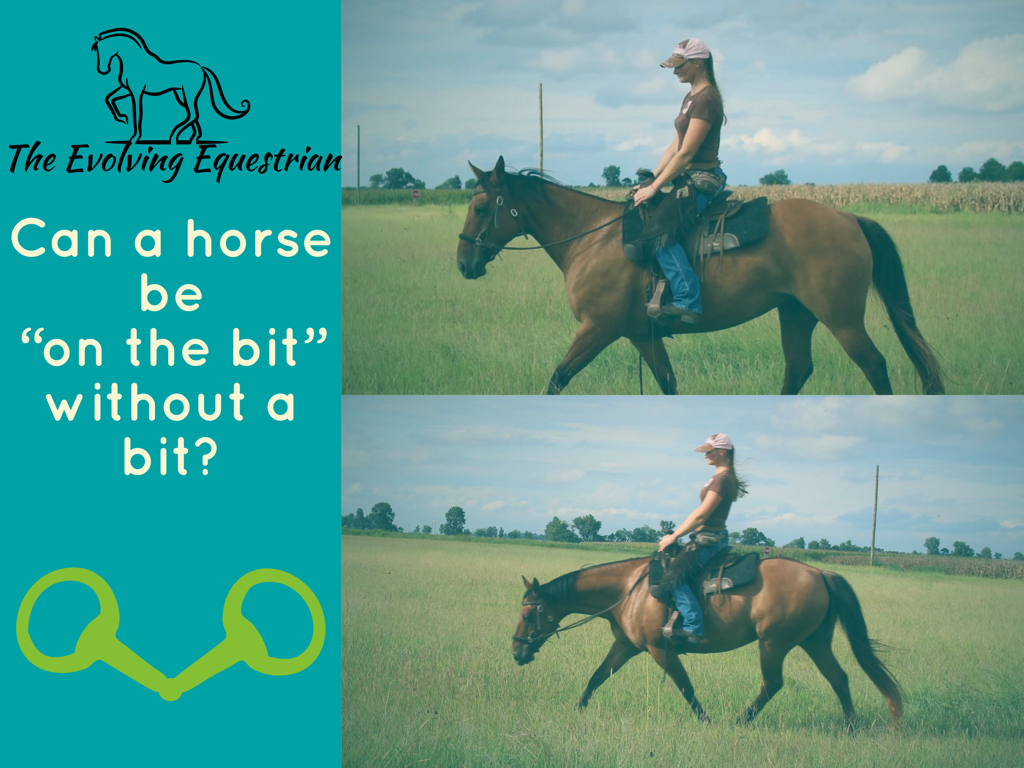|
If you ride bitless or have considered it, you’ve probably heard someone say that a horse cannot be properly trained without a bit. You’ve heard that a horse can’t possibly be “on the bit” if he’s not packing one around in his mouth. You’ve probably been told that a bit is required to advance your horse’s training to a higher level. Are these things true? Can your horse be ridden correctly without a bit?
While its easy to feel the pressure from other riders and trainers, it’s important to remember that you are on your own journey, doing what works best for you and your horse. However, you might be left wondering if any of these points are valid. You want to ride your horse correctly, and if this can’t be done bitless, you might be tempted to rethink your bridle choice. We know that behavior is altered by punishers and reinforcers. Bits do not possess some magical quality that modifies behavior some other way. With that being said, all a bit enables the rider to do is apply negative reinforcement or punishment easier. The idea that horses must have a bit to be trained correctly perpetuates the idea that it cannot be done without utilizing pain. And for those who know no other way, it’s easy to understand why they don’t think a bit is optional for proper riding. For those who know that responses can be trained through the use of appetitives instead of aversives, it’s clear that a bit is not necessary. Is it true that a horse cannot be “on the bit” without a bit? You may have heard already that the phrase “on the bit” does not exist in the classical texts from which it was translated. When the classical texts were translated from French to English, the phrase “on the bit” was created for lack of a better expression. It has been determined that a more appropriate phrase would be “on the aids”. Obviously, “on the bit” puts an unfortunate emphasis on the bit itself and the horse’s head and neck. From what we know of classical dressage, the focus is on the engagement of the hindquarters and connection over the horse’s back to create thoroughness, balance, and impulsion. This training deals in so much more than a bit or a single aid. The aim of dressage is to improve the natural paces. They become more beautiful with training. The horse develops pushing power and carrying capacity when brought along with the principles of classical foundation training. Focus on the hands and the bit has caused a downward spiral in modern dressage where we see horses being pulled into a false frame in attempts to get these horses “on the bit”. There is more to creating a responsive horse that seeks and accepts the aids than just pulling on the reins. If you take a look back at classical training, you will see that most of the schooling of the classical dressage horse was done in a cavesson. Eventually the bit was slowly introduced, and even still the reins were held in the left hand and were not used. This was done to preserve the sensitivity of the horse’s mouth. This would indicate that a horse can be properly trained without a bit. It wasn’t until much later in the training after the horse had been made light and in self carriage that the reins attached to the bit were held in the right hand. You can ride your horse correctly without a bit. If you are told otherwise, consider the source. They may not understand the principles of learning theory or the principles of classical dressage.
1 Comment
|
AuthorChrissy Johnson shares her personal experiences and lessons learned training horses with reward based methods. Archives
July 2022
Categories |

 RSS Feed
RSS Feed